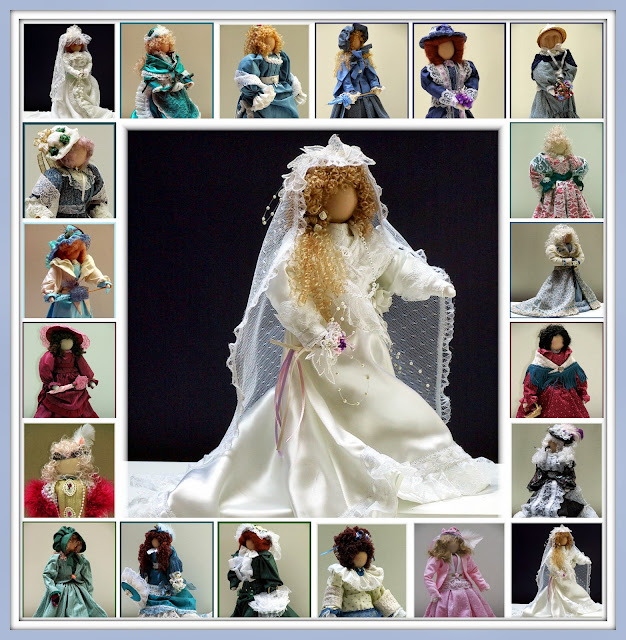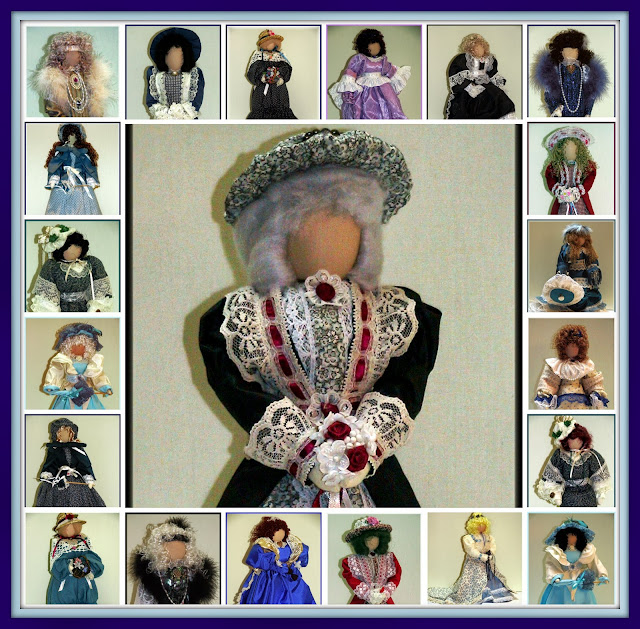When trying to decide on which small cross-stitch kits I wanted to try last year I knew I wanted to cover several holidays and seasons. To cover the Christmas holiday season and the winter season I choose the counted cross-stitch and bead design from Mill Hill - -Buttons & Beads Series #MH14-7301 Queen Anne House. I, of course, just love Victorian Houses so this was a simple choice for me!
Like the other Mill Hill - Buttons & Beads Series patterns I had bought the Queen Anne House kit included the pattern, embroidery thread, perforated paper, beads, 2 needles and instructions.
The Queen Anne House pattern uses full counted cross-stitch and outline stitching as well as beads for emphasis and depth. The pattern also calls for certain areas of the perforated paper to be left untouched as the background.
Given the experience I had with my "
Spirit of Quilting Angel Counted Cross Stitch Project" and the fragile nature of perforated paper I decided to add wide masking tape to the back of my perforated paper before I started cross-stitching. I also decided to utilize the rectangular wood frame jig that my darling husband built for me that I could tape the edges of my perforated paper to. The wood frame jig was a rectangular embroidery hoop of sorts, but without bending the paper. He made it out of 1/2" x 1" pine wood strips. It also had an adjustable center strip that I used for this 5 x 5 square design.
I also decided this time that I needed to draw diagonal lines to locate the exact center of the perforated paper as in the
Gather Together cross-stitch picture I was slightly off center by a few holes which caused a problem with inserting the needles in the holes along one of the edges of my frame. So, I drew a diagonal line across each corner to get the center point of the perforated paper.
I had also run into a slight problem with the beads along the edge of the Gather Together cross-stitch picture I had done when framing it so this time I also drew squares on the perforated paper to show me where the 5" x 5" square was and where a 4 1/2" x 4 1/2" square would be. The reason for the latter was because one of the frames I was considering for this while 5" x 5" only displayed 4 1/2" x 4 1/2" in the glass window. So, I wanted to make sure that I was okay as far as the design and beads were concerned along the edges were I to use this frame. Ten to one I was going to use the shadowbox frame like I had done for my Gather Together cross-stitch picture so this wouldn't be a problem. But, just in case I didn't I wanted to be prepared.
While the end results of this design were wonderful some things in the kit and in the instructions could be improved upon. I'd like to offer the following constructive suggestions:
The cross-stitch chart was in black and white as was the floss color code and symbol key. Both were easy to read and very clear. While I had no problem with the chart and keys I did have a problem with the way the DMC floss was presented. All of the floss was tied together in one big knot so you had to separate the floss pieces yourself, sort them, and try to interpret which color belonged to which floss # and symbol key on the color chart. If you only have a few colors to deal with this isn't a problem. However, if you have several different colors of say green to choose from that are close in color then interpreting the chart can be tricky. You may assign the wrong color to the wrong symbol if the colors are too closely aligned.
As I have done with other cross-stitch kits I've completed I had to design my own thread color sorter and symbol key. I took a piece of thin cardboard and cut a 1" x 9" long rectangular piece out to use as a thread sorter. I then punched 20 holes in my cardboard strip in which to tie each of the different colors. Just above the hole I wrote the DMC floss # and just below the hole I added the respective cross-stitch symbol. I then inserted the floss threads that went with that # and symbol through the hole and tied them in a loose knot. This kit could be much improved if a thread sorter with respective #'s and symbols was provided.
The beads were contained within two small ziploc bags which was fine. However, several different color beads were contained within each bag without any indication as to what bead numbers were included within the respective bag. If you only had one color bead to choose from in a bag this wouldn't have been a problem. However if there were multiple green beads within one bag or one bag contained green beads and the other bag contained green beads then you were left to interpret which color green bead the color chart was referring to. Labeling the ziploc bags as to which bead number they contained would enhance this kit.
I love using beads in cross-stitch designs as I think they really enhance the designs, as was the case with this kit. However, I had a tough time trying to thread the really tiny needle that came in this kit for beading purposes. I know the head of the needle has to fit through the tiny bead openings, but these needles were really, really difficult to thread and trying to do so was not only frustrating, but time consuming.
The pattern called for certain areas of the perforated paper to be left untouched as the background like the picture shown below:




















